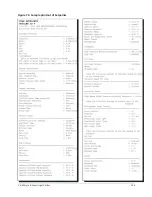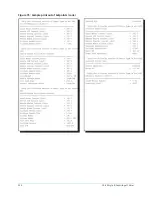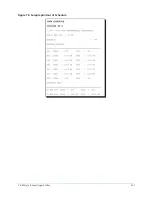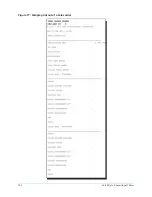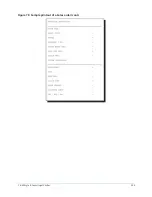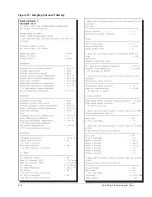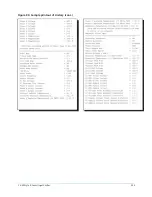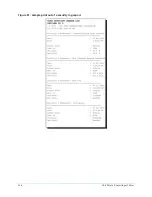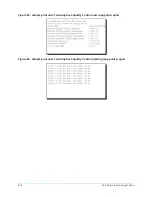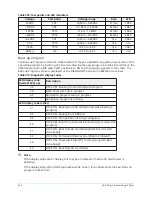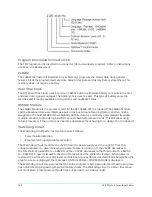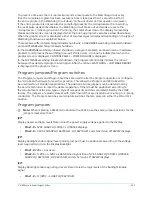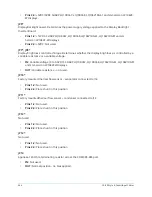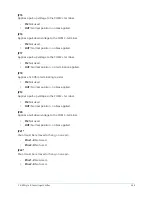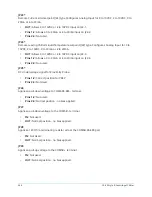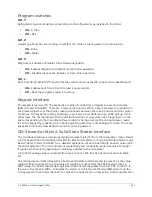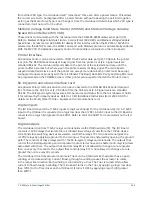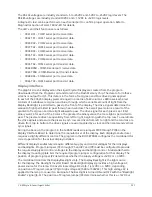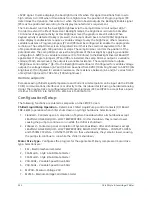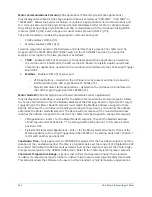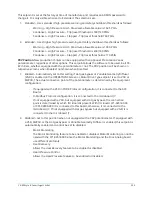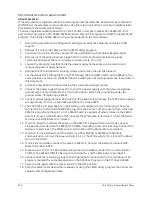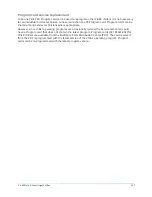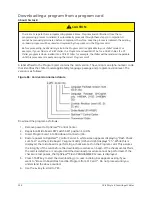
To prevent a time-out, the microprocessor sends a reset pulse to the Watchdog circuit every
time the complete program has been executed. Since it takes less than 1 second to perform
the entire program, the Watchdog circuit doesn’t time-out under normal operation. However,
if the entire program is not executed or something prevents the microprocessor from sending
the reset pulse as described below, the Watchdog circuit times-out and sends a reset to the
microprocessor, initiating a re-boot. If running, the chiller shuts down. The display momentarily
blanks and the white screen is displayed while the boot-up program executes as described above.
When the graphic screen is displayed, either of two messages is displayed depending on the type of
Watchdog shutdown as explained below.
There are two different watchdog initiated shutdowns; a HARDWARE watchdog initiated shutdown
and a SOFTWARE watchdog initiated shutdown.
In the HARDWARE watchdog initiated shutdown, a program problem, on-board noise or hardware
problem could prevent the watchdog time-out. If this occurs, a re-boot is initiated and when the
graphic screen is displayed, CONTROL PANEL – POWER FAILURE is displayed.
In the SOFTWARE watchdog initiated shutdown, the program intentionally initiates the reboot
because it has detected program interruption. After the reboot, WATCHDOG – SOFTWARE REBOOT
is displayed on the graphic screen.
Program jumpers/Program switches
The Program Jumpers and Program Switches are used to alter the program operation or configure
the microboard hardware for specific operation. This allows the Program and Microboard to
be universal for all standard applications. The position of some jumpers can be determined by
the Service technician to meet the desired operation. Others must be positioned according to
the requirements of the size, type or style of components and thus are determined by the YORK
factory. The jumpers are plastic sleeves with metal inserts that are inserted over 2-prong or 3-prong
conductors. The Program Switches are miniature switches that are placed in either the ON or OFF
position.
Program jumpers
Note:
When replacing a 02430 microboard with a 03630, use the same jumper positions for the
jumpers marked with an *
JP2*
Display power and logic levels Determines the power supply voltage applied to the display.
•
Pins 1-2:
+5VDC SHARP LQ10D367, LQ10D368 displays.
•
Pins 2-3:
+3.3VDC SHARP LQ104V1DG61, LQ104V1DG81 and LG Semicon LP104V2W displays.
JP3*
Display backlight enable signal level polarity. Jumper must be positioned according to the voltage
level required to turn on the Display Backlight.
•
Pins 1-2:
0VDC – not used.
•
Pins 2-3:
+12VDC or +5VDC as determined by position of JP4. SHARP LQ10D367 LQ10D368,
SHARP LQ104V1DG61, LQ104V1DG81 and LG Semicon LP104V2W displays.
JP4*
Display Backlight enable signal logic levels. Determines the logic levels of the Backlight Enable
signal.
•
Pins 1-2:
+12/0VDC – SHARP LQ104V1DG81.
243
YK-EP Style B Centrifugal Chiller
Summary of Contents for YK-EP
Page 2: ...2 YK EP Style B Centrifugal Chiller...
Page 6: ...6 YK EP Style B Centrifugal Chiller...
Page 227: ...Figure 72 Sample printout of Status 227 YK EP Style B Centrifugal Chiller...
Page 228: ...Figure 73 Sample printout of Status cont YK EP Style B Centrifugal Chiller 228...
Page 229: ...Figure 74 Sample printout of Setpoints 229 YK EP Style B Centrifugal Chiller...
Page 230: ...Figure 75 Sample printout of Setpoints cont YK EP Style B Centrifugal Chiller 230...
Page 231: ...Figure 76 Sample printout of Schedule 231 YK EP Style B Centrifugal Chiller...
Page 232: ...Figure 77 Sample printout of a Sales order YK EP Style B Centrifugal Chiller 232...
Page 233: ...Figure 78 Sample printout of a Sales order cont 233 YK EP Style B Centrifugal Chiller...
Page 234: ...Figure 79 Sample printout of History YK EP Style B Centrifugal Chiller 234...
Page 235: ...Figure 80 Sample printout of History cont 235 YK EP Style B Centrifugal Chiller...
Page 236: ...Figure 81 Sample printout of a security log report YK EP Style B Centrifugal Chiller 236...

